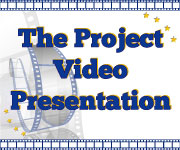basic information
THE INITIATIVE PROMOTER’S PERSPECTIVE
Werther and Olrik were approached by Jette Riisgård and a researcher from the DPU, which they knew from before. They were asked if they would like to participate in a TMF project (IT and media in education) that dealt with languages. They thought it seemed an obvious, good idea to create an interactive portal for the 3 languages English, German and French. They also thought it was important that all three languages were represented, which had not been the case before.
To create language teaching based on an interactive and communicative approach, based on the student’s interests and level.
They were 5 teachers in the beginning who taught in the target languages who decided to have mutual meetings about 1 time a month with the research group and an ICT consultant from DPU. (DPU is the Institute for education and pedagogics in Aarhus, Denmark). They also included an ICT expert in the project that could help them with the technical aspects of the project. After the launch of the project website a larger group of language teachers from different schools were invited to the project. On some occasions the teachers were summoned to give feedback and present ideas and suggestions from students in their respective classes.
The site consisted of various interactive facets created by students to other students. The language inputs and framework were created by teachers. Unfortunately, there was not a possibility of making use of audio files at that time, which would have increased the dividend for students. The promoters say that if the project would be presented today sound files and images would have been included as important elements of the project website.
Lise Olrik and Dorrit Werther reported that they saw it as a great recognition of their innovative language project, and several of the features of their site was later re-used in connection with a larger EU project.
One of the promoters Dorrit Werther, was asked few years after the award if she would participate in a project aimed for 9-14 year olds. It resulted in the website www.moviestarplanet.com
The project was marketed through EMU, which is a joint Danish portal for all subjects on ICT in teaching. In addition, they participated in a seminar in Rome and Birmingham, where they had the opportunity to talk about their project.
They didn’t really apply for the ELL award but were asked to apply. They said that our best advice would be: "Go for it." Think we can do more than we realise and collaborate with other people around innovation
THE NELLIP NETWORK’S PERSPECTIVE
It has a comprehensive approach. The needs of the students are identified and met. It provides an improvement in the teaching and learning of languages.
The Danish priorities this year were language teaching in compulsory school, this project is highly consistant with that
Comments on this Case Studies
